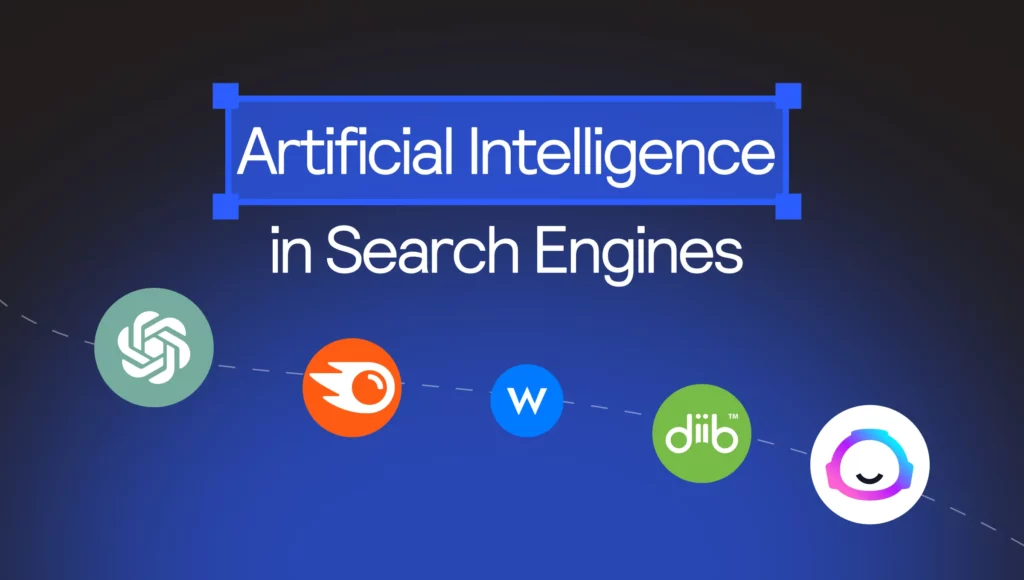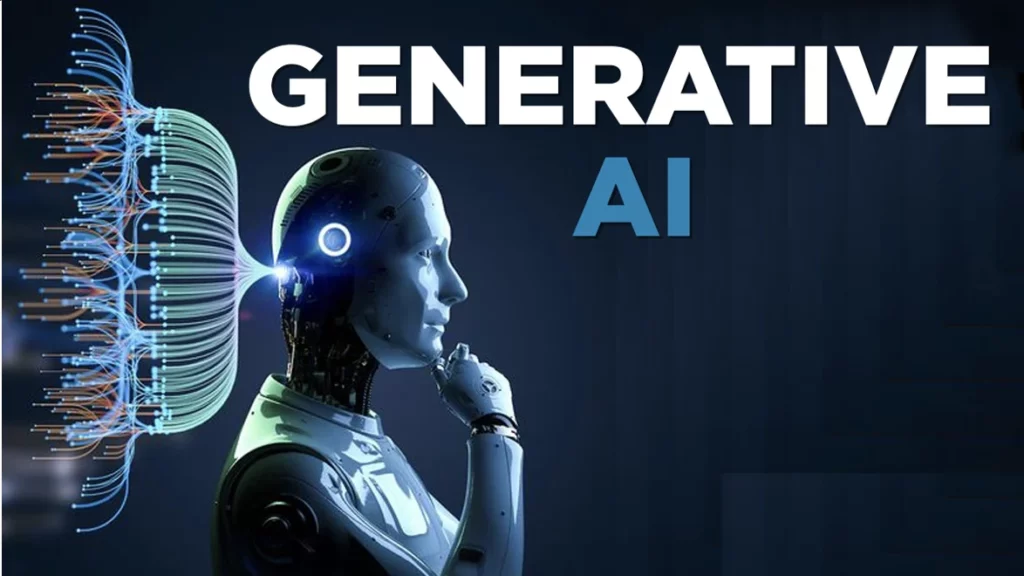- Home
- AI Search
AI Search
Table of Contents


The biggest change to the way search engines have delivered information to us since the 1990s is happening right now. No more keyword searching. No more sorting through links to click. Instead, we’re entering an era of conversational search. Which means instead of keywords, you use real questions, expressed in natural language. And instead of links, you’ll increasingly be met with answers, written by generative AI and based on live information from across the internet, delivered the same way. 1
This search revolution combines human curiosity with AI precision—and if you are not ready, your business could fall.
“The traditional SEO business model, has been based on keywords data, around keywords, and strategy around keywords. Now keywords are gone.” Michael Bonfils, CEO DIG, SearchEngineJournal, May 2025
For example, traditional SEO focuses on creating the “best page.” This means comprehensive guides covering everything about a topic. AI search wants the “best answer.” This means specific, focused responses to exact questions in context. Keywords don’t hack it.
Voice search alone accounts for 50% of online queries, and AI tools like Perplexity, ChatGPT and AI Overviews (AIO) are evolving fast. Traditional Search Engine Optimization (SEO) now shares the stage with AI SEO, Answer Engine Optimization (AEO) and Generative Engine Optimization (GEO). So, AI-driven search engines are the future. Ignoring them is ignoring success. 2
GEO vs AEO vs SEO vs AI SEO: A Comparison Guide
Definition and Goals
SEO (Search Engine Optimization): Improves rankings in traditional search engines like Google and Bing. It relies on keywords, backlinks, and technical optimization to drive organic traffic 1, 3, 7.
- AI SEO: Uses AI technologies to optimize website content and structure, making them AI engine search friendly. It fundamentally changes how content is created, optimized and maintained.
AEO (Answer Engine Optimization): Optimizes content for AI-driven search engines to provide direct answers. It emphasizes structured data, Q&A formats, and voice search optimization 3, 4, 7.
Comparison Table: SEO, AI SEO, AEO, and GEO
| Feature/Aspect | SEO (Traditional) | AI SEO (AI-Powered SEO) | AEO (Answer Engine Optimization) | GEO (Generative Engine Optimization)
|
|---|---|---|---|---|
| Core Focus | Keyword density, backlinks, metadata optimization | Automation, data-driven insights, predictive analytics, personalization
| Optimizing content for direct answers and featured snippets | Optimizing content for generative AI and conversational engines |
| Content Strategy | Manual content creation, keyword targeting, on-page elements
| Automated keyword research, content generation, real-time optimization | Structured data, concise answers, question-based content | Content structured for AI summaries, conversational flow, and context |
| Personalization | Limited, manual audience research | Advanced personalization using machine learning and user behavior analysis | Focus on matching user intent and providing precise answers | High personalization, context-aware responses, adapts to user queries
|
| Technical SEO | Manual audits, site structure, HTML tags | Automated site audits, schema markup, technical optimization | Structured data (schema), optimized for answer boxes | Automated technical audits, optimized for AI-driven engines
|
| Adaptability | Slow, manual response to algorithm updates | Real-time adaptability, automated updates in response to algorithm changes
| Adapts to changes in answer box algorithms | Rapid adaptation to evolving generative AI models and algorithms |
| User Experience | Focus on SERP rankings and organic traffic | Enhanced UX through predictive analytics and AI-driven recommendations
| Aims for zero-click searches, instant answers | Prioritizes conversational engagement and relevance in AI-generated results |
| Optimization Tools | Google Search Console, SEMrush, Ahrefs, manual tools | AI-enhanced tools for content gap analysis, SERP simulation, automated audits | Tools for structured data and featured snippet optimization | AI prompt optimization tools, SERP simulation for generative engines
|
| Content Output | Human-written, optimized for search engines | AI-assisted or AI-generated, optimized for both users and search engines
| Concise, factual, and structured answers | Context-rich, conversational, and adaptable content |
| Measurement of Success | Traffic, clicks, backlinks, keyword rankings | Includes AI-driven summaries, time-to-answer, relevance in conversational flows
| Featured snippet presence, answer accuracy | Quality and relevance of AI-generated summaries and conversational responses |
| Primary Search Target | Traditional search engines (Google, Bing) | Traditional and AI-powered search engines (SGE, Gemini, Bing AI) | Answer engines (Google’s featured snippets, voice assistants) | Generative AI engines (ChatGPT, Gemini, Bing AI, SGE) |
SEO-AI SEO -AEO-GEO Key Notes
SEO is manual, focuses on keywords and backlinks, and changes slowly.
AI SEO leverages automation, real-time data, and personalization for rapid, scalable optimization 1, 2, 5, 6.
AEO targets answer boxes and voice search, focusing on delivering direct, structured answers.
GEO is designed for generative AI and conversational search, optimizing for context, summaries, and dialogue4.
This table highlights how each approach targets different aspects of modern search, with AI-driven methods offering greater automation, adaptability, and relevance for evolving search behaviors.

Impact of AI Search on Traditional SEO
Generative AI is reshaping the search landscape:
AI Overviews appear in 30% of Google searches, especially for problem-solving queries 2.
By 2026, traditional search engine volume is predicted to drop by 25%, as users increasingly rely on AI chatbots and generative platforms 5.
Businesses must adapt as traditional SEO metrics (e.g., CTR) become less reliable due to off-SERP interactions with AI-generated answers 8.
Strategic Recommendations
To stay competitive:
Combine AI SEO for foundational rankings with AEO for featured snippets and GEO for AI-driven platforms.
Focus on E-E-A-T (Experience, Expertise, Authoritativeness, Trustworthiness) content to enhance credibility across all strategies 1, 4.
Monitor emerging metrics like impression scores for GEO success 9.
How AI EngineBoost Connects SEO, AI SEO, AEO, and GEO Search Strategies
How AI EngineBoost Connects & Supports Each Approach | |
|---|---|
| SEO | Automates keyword research and creates optimized content in multiple formats (articles, infographics, videos). Distributes this content to over 300 high-authority sites, boosting visibility and earning valuable citations and backlinks for stronger search rankings. |
| AI SEO | Uses AI to analyze trends, cluster keywords, and generate multi-format content tailored to user intent. Ensures broad distribution, increasing the chances of being cited and referenced across the web, which enhances authority and relevance in search algorithms. |
| AEO | Structures content for direct answers and featured snippets in various formats (Q&A, lists, videos). Distributes these assets widely, increasing the likelihood of being cited as a trusted source in answer boxes and voice search results. |
| GEO | Crafts context-rich, conversational content suitable for generative AI engines in formats like articles, FAQs, and multimedia. Distributes this content to hundreds of platforms, maximizing exposure and generating citations that signal trust and expertise to AI models. |


